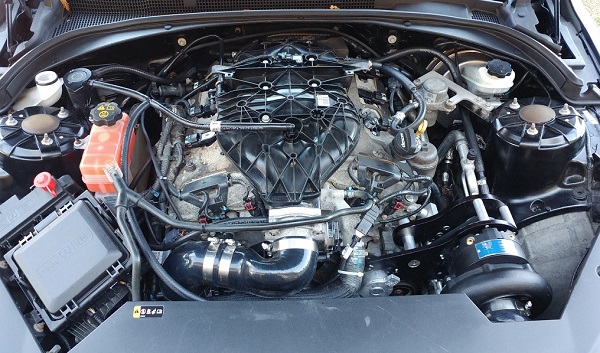
Regarding #2, the up and down motion eventually creates a vacuum that will draw oil up from the crankcase as the engines start to wear. but DOD, even with just losing 2 cylinders definitely makes a noticeable impact on mileage and it would be a shame to lose that option (i can switch mine on / off by switching between sport and touring due to my tune). So yea, most of the catch can systems out wont have that extra vacuum setup because it's not needed.Įdit: also, yes, super jelly i dont have a SC'd v6.

It shouldn't be possible to build up positive pressure otherwise since it's supposed to vent to the intake (which is always low or at ambient air pressure). My only issue with #1 is that building up pressure in the PCV system is only possible when you're boosting the intake and the pcv is dumping into that boosted portion. There shouldn't be a vacuum or there would be no spring action and the system wouldn't work correctly. The way the DOD is supposed to work in the Lgx is it traps air in the chamber and the piston will use this to spring up and down as the crank rotates. My bottom line is I have no concerns about engine life on our supercharged setup, once the setup is fully tuned, running 91 octane or higher only, and if running synthetic oil and properly following maintenance intervals.

Disabling DoD is a positive improvement in engine life, for a small negative in fuel mileage. Look on truck or LS4 discussion groups and you'll see mention of a puff of blue smoke on the highway when it reactivates, it gets that bad as the engines age. This vacuum will suck oil up above the pistons and then burn it when the cylinders reactivate. While I understand and appreciate the intention of DOD, what it does when active is close both the intake and exhaust valves, which combined with the constant up and down motion of the pistons creates a vacuum in the combustion chambers. This will help prevent the buildup of positive crankcase pressure which can blow oil past the control rings and into the combustion chambers, and catch and collect oil vapours.Ģ) For automatics, the Overkill tuning will disable the displacement on demand. The combination of intake manifold vacuum and supercharger inlet vacuum will continue to draw a vacuum for crankcase air, and is compensated for in the tuning. Unlike all current LGX catch can systems that I'm aware of, the Overkill supercharger system will reintroduce a vacuum sourced PCV system that was eliminated from factory. There are a few ways that this kit will improve engine life though over doing nothing at all:ġ) The catch can system. Mandating this requirement is good for engine life. Just about any synthetic is good if you change based on the factory oil life counter or sooner, I run Amsoil. If you're not running synthetic oil, you should be with a supercharged vehicle, you absolutely should. I don't anticipate any increased fragility from the LGX, nor would I suggest it will hold more horsepower, but I will suggest that it should be just as happy holding the power of our base supercharger kit without issues of piston failures or connecting rod failures etc. We know however on the LFX that it's very happy holding the horsepower numbers of 400-450 wheel horsepower, from the cars that have been supercharged for a couple of years with the old discontinued system.
Overkill supercharger install#
Q: How do you install a supercharger? A: Superchargers are vehicle-specific, and they will come with everything needed for a direct bolt-on.Do you have any expectation for degradation of internals for a daily driver ? I understand you are putting more stress on the engine so please don't reply with mod at your own risk or whatever I am more looking for reliability of supercharging a daily and what to expect to break first if its going to kind of answer.Īny mod will decrease the overall life expectancy of an engine, must start with that simple fact. It gets its power the same way that your water pump or alternator does. A supercharger's power supply comes from a belt that connects directly to the engine. More air means that more fuel can be stuffed in, too, so you get more power from each explosion in each cylinder. By compressing the air, it lets the engine stuff more air into a cylinder. Superchargers offer perhaps the most dramatic increase in horsepower to your car of any aftermarket products. Q: What does a supercharger kit do? Why buy a supercharger? A: A supercharger is a form of forced induction. If you're looking to up the boost past the stock 6 to 8 psi that it comes with stock other modifications will need to be made. Q: Does a supercharger kit come with everything you need? Or is there a pre-condition my vehicle needs to meet in order to be able to handle a supercharger kit? A: When purchasing a supercharger setup they are vehicle specific which means it will come with everything needed for a direct bolt-on.


 0 kommentar(er)
0 kommentar(er)
